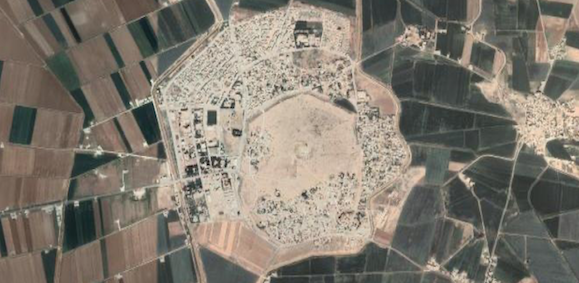Temples, Shrines, and Ziggurat of Harran

Harran, a large garrison and important trading center situated on the route between the Mediterranean Sea and the plains of the middle Tigris, was one of the most important cult centers of the moon-god Sîn and his entourage Nikkal (Ningal), Nusku, and Sadarnunna. The city — whose Akkadian name means "way, road, carrefour, journey, caravan" — had special political, military, and religious significance long before the late Neo-Assyrian (721–610 BC) and Neo-Babylonian (625–539 BC) Periods, when its principal temple Ehulhul, its tutelary deities, and its largely Aramean population enjoyed a privileged position. Although Harran's main religious buildings were important in the first millennium BC, as is abundantly clear from royal inscriptions describing their reconstructions (in particular in texts composed during the reigns of Assyria's last great king, Ashurbanipal [r. 668–ca. 631 BC], and the last native ruler of Babylon, Nabonidus [r. 555–539 BC]), no presently-known first-millennium-BC lists of temples and ziggurats mention by name Ehulhul or any of the other temples (Egipar or Emelamana) in that city. According to royal inscriptions written in the Akkadian language, Harran's main temples were:
Alphabetical list of temples at Harran
- Egipar: seat of the goddess Nikkal (Ningal)
- Ehulhul: temple of the god Sîn
- Emelamana: temple of the god Nusku
In addition, Neo-Assyrian and Neo-Babylonian sources record that there was also a New Year's festival house (an akītu-temple) and a ziggurat at Harran. While nothing is known about the latter structure (including its name), the former building was located somewhere inside the city (according to an inscription of Ashurbanipal), perhaps in the lower town, near one of the city gates, possibly at or near the Deir Kadhi, which is at the Gate of the Inn of the Olives.
At this time, BTMAo only includes information on Ehulhul, although Egipar and Emelamana are discussed in connection with that temple since both buildings appear to have been parts of that temple complex.
Jamie Novotny
Jamie Novotny, 'Temples, Shrines, and Ziggurat of Harran', Babylonian Temples and Monumental Architecture online (BTMAo), The BTMAo Project, a sub-project of MOCCI, [http://oracc.org/btmao/Harran/]